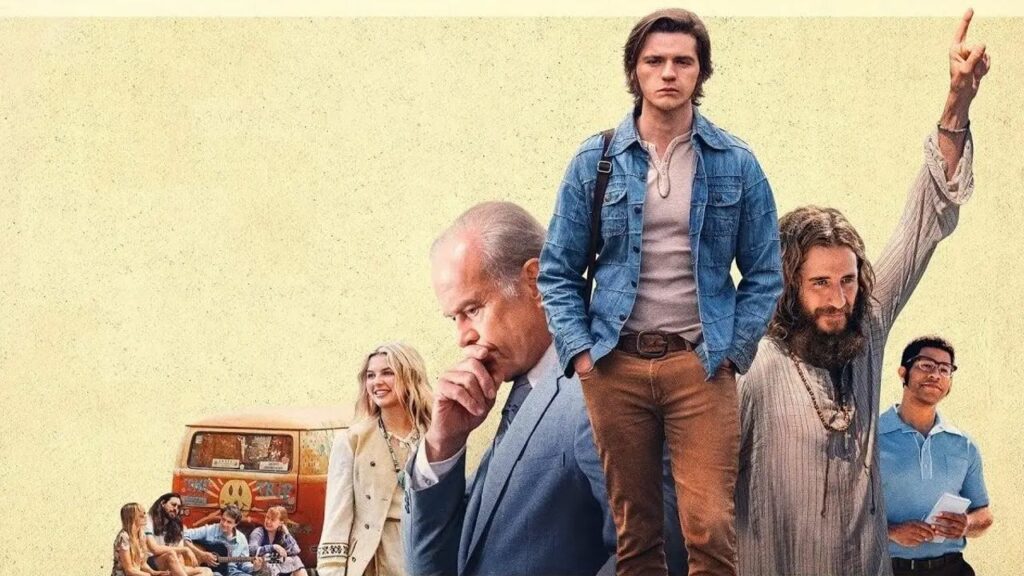Jesus Revolution on Netflix is based on Chuck Smith’s church, Calvary Chapel Costa Mesa, which was established in 1965.
Netflix‘s new addition, Jesus Revolution (directed by Jon Erwin and Brent McCorkle) is a Christian drama film about Greg Laurie, a boy who lives with his mother, Charlene. He and many other traveling youngsters come to Southern California during the Hippie Movement of the 1970s to disseminate the truth and seek emancipation.
Greg encounters Lonnie Frisbee, a charismatic street preacher, and Pastor Chuck Smith, who accepts them and all the kids into his church. What happens next is a national countercultural revolution dubbed the largest spiritual awakening in American history. The Jesus Movement, as it is known, provides Greg and Pastor Smith with a revitalized sense of purpose as they spread love and the Christian message across the country.
With the arrival of the movie on the streaming platform, we have found that many people have been curious to know which church is Jesus Revolution based on since the movie is inspired by real events. Well, we’ve got you covered.
Jesus Revolution Is Based on Chuck Smith’s Church, Calvary Chapel Costa Mesa!
According to Collider, Chuck Smith‘s church in Jesus Revolution is based on a real-life pastor’s chapel, Calvary Chapel Costa Mesa. The church was established in 1965 by Smith. The film covers the beginnings of the church and how Smith recruited hippies to join the congregation in order to increase membership numbers.
 Jesus Revolution is based on the church named Calvary Chapel Costa Mes.
Jesus Revolution is based on the church named Calvary Chapel Costa Mes.
Image Source: The Church Times
When Smith originally started Calvary Chapel Costa Mesa, the pastor struggled to attract new members. Calvary was striving to increase membership and improve its finances at the time. Therefore, accepting the Jesus freaks helped in the church’s growth. At the same time, senior church members occasionally fought with the younger ones.
He had no idea how to connect with the younger generation. A few years later, while the chapel was on its last days, Smith’s decision to bring in Lonnie Frisbee and invite hippies to the church boosted the Jesus movement in southern California, as depicted in Jesus Revolution.
Greg Laurie‘s introduction to Frisbee is also appropriately depicted in the film. Laurie’s commitment to Christianity was prompted by this, and he soon began attending Chuck Smith’s Calvary Chapel.
Laurie established the Harvest Christian Fellowship in 1973, a megachurch that still operates today and has over 15,000 members. Calvary Chapel Costa Mesa was just the beginning. Currently, there are over 1,000 Calvary Chapel institutions in the United States, with many more internationally.
Lonnie Frisbee Played an Important Role in the Rise of the Jesus Revolution!
Lonnie Frisbee is one of the main characters in Jesus Revolution, and maybe the most fascinating. On the surface, he appeared to be the stereotypical hippy preacher. He had long hair, and a beard, and was dressed in a trendy countercultural way. His impact on Christianity in the United States was significant.
 Lonnie Frisbee was one of the major members of the Jesus Revolution.
Lonnie Frisbee was one of the major members of the Jesus Revolution.
Image Source: Lonnie Frisbee’s official website
He co-founded the House of Miracles commune network, which expanded into the Shiloh Youth Revival Centers. Frisbee used these institutions to reach out to alienated and even drug-addicted youngsters who were seeking help.
Frisbee’s legacy is still discussed among believers and nonbelievers today, as depicted in a feature documentary about him. On the one hand, he was a charismatic speaker who professed to be a prophet and to speak in tongues.
He taught a message that was congruent with conventional Christianity, which meant that he considered both drug use and homosexuality to be sins. On the other side, he was a secret gay man who occasionally took illicit drugs.
Frisbee’s Shiloh Youth Revival Centers, like the rest of the Jesus movement, ultimately faded away in the late 1980s and Frisbee died of AIDS in 1993, when he was 43 years old.

